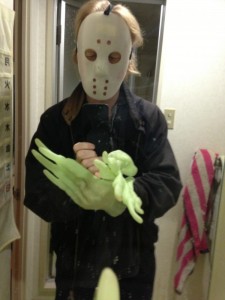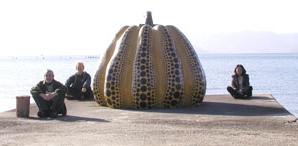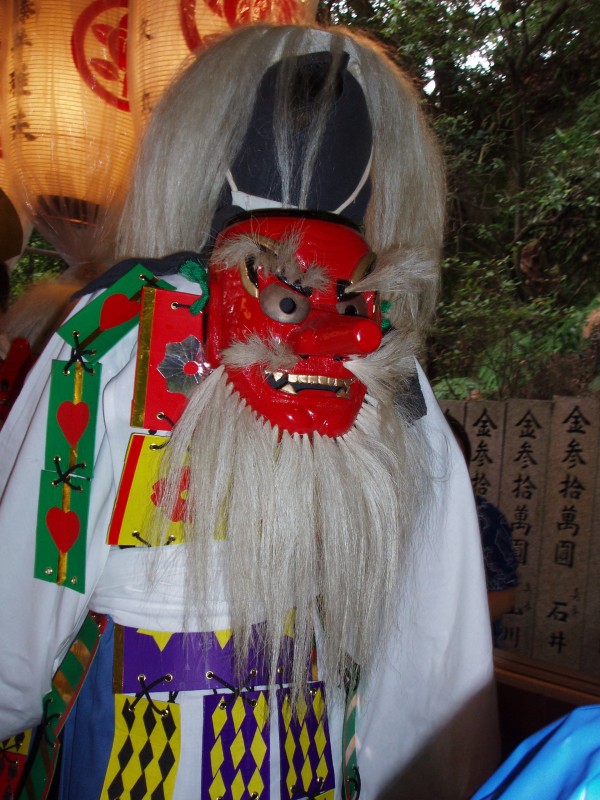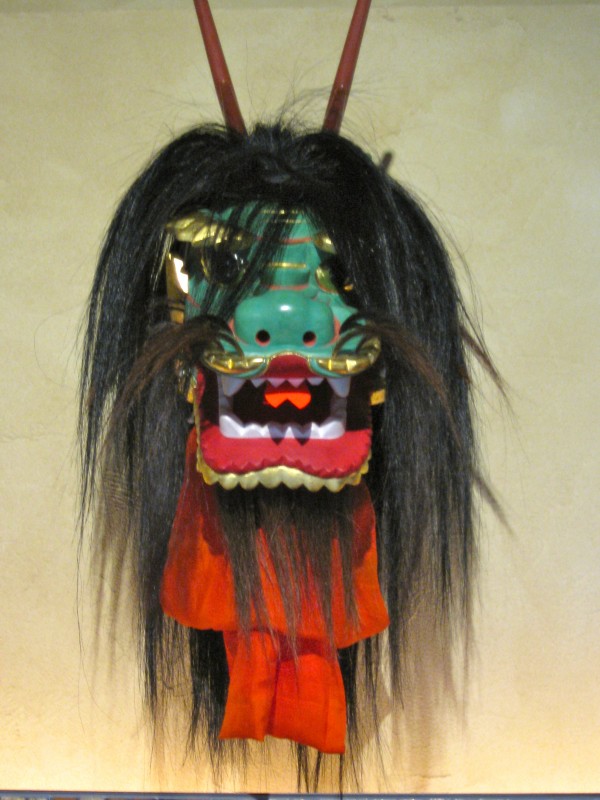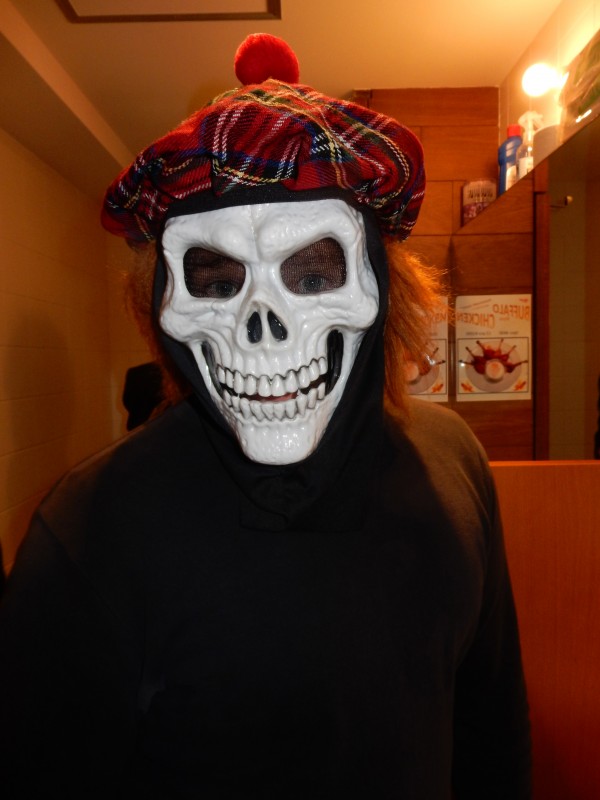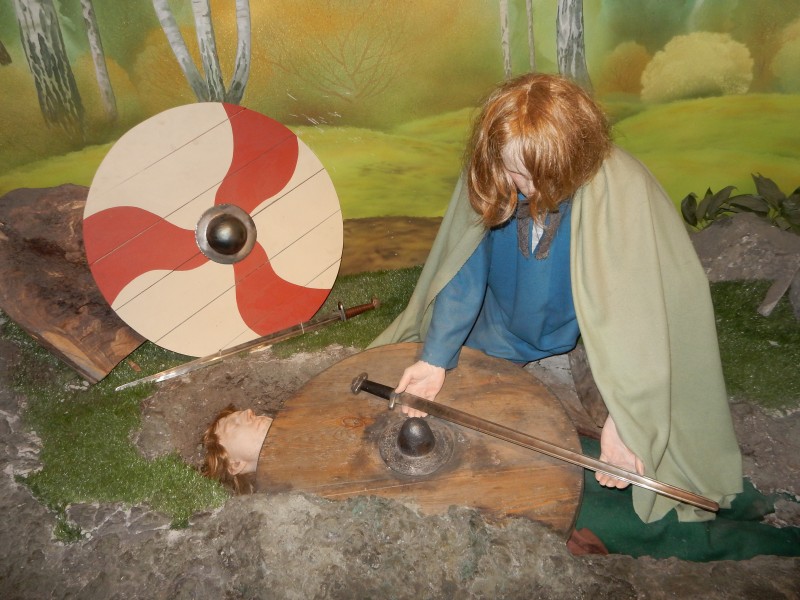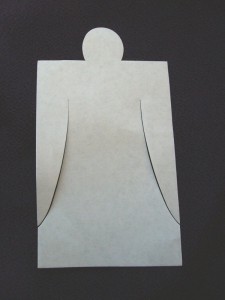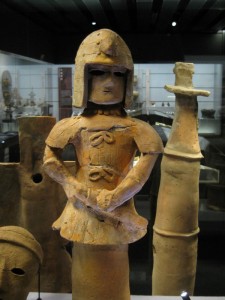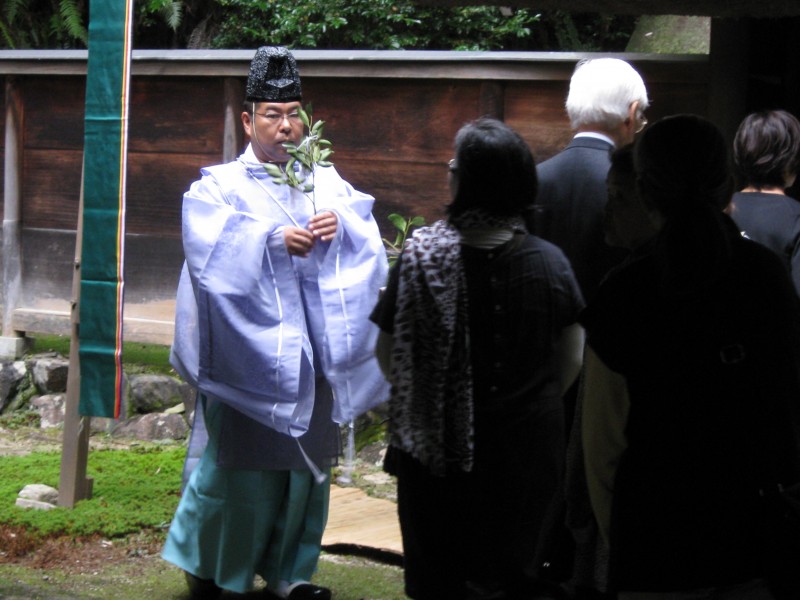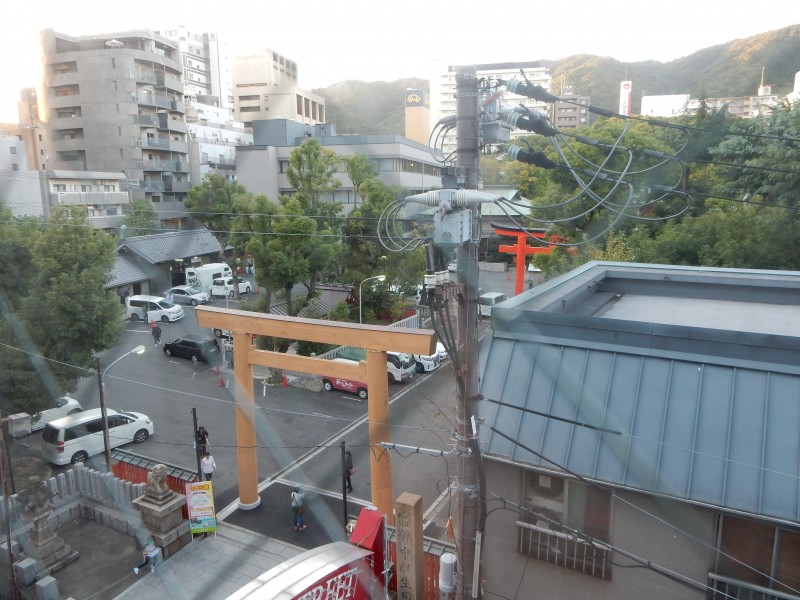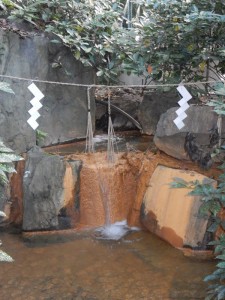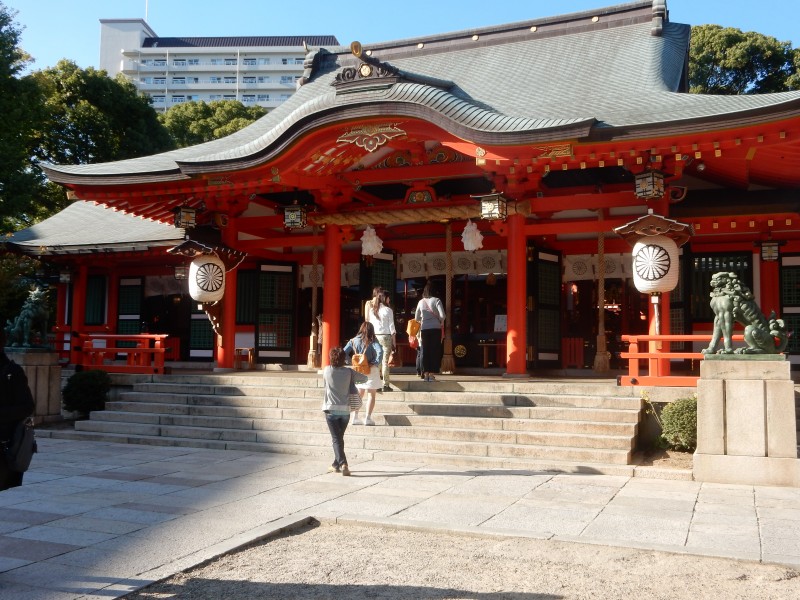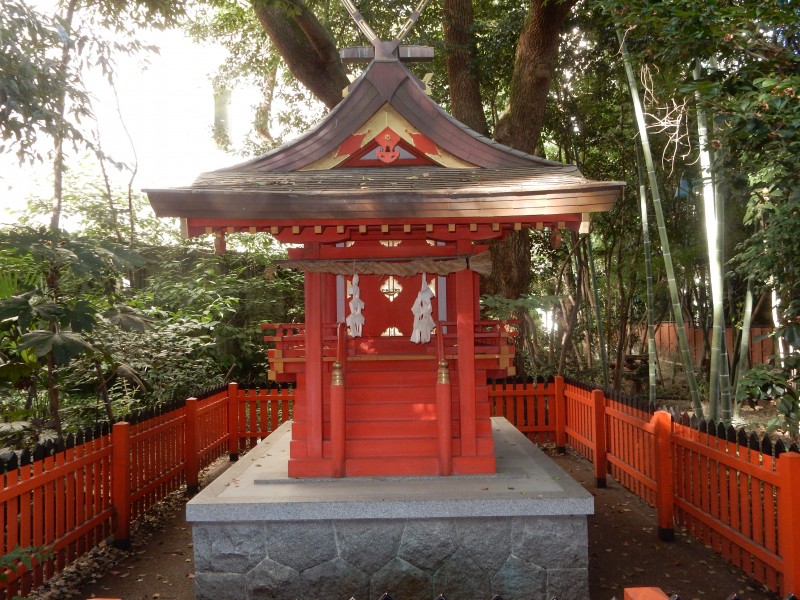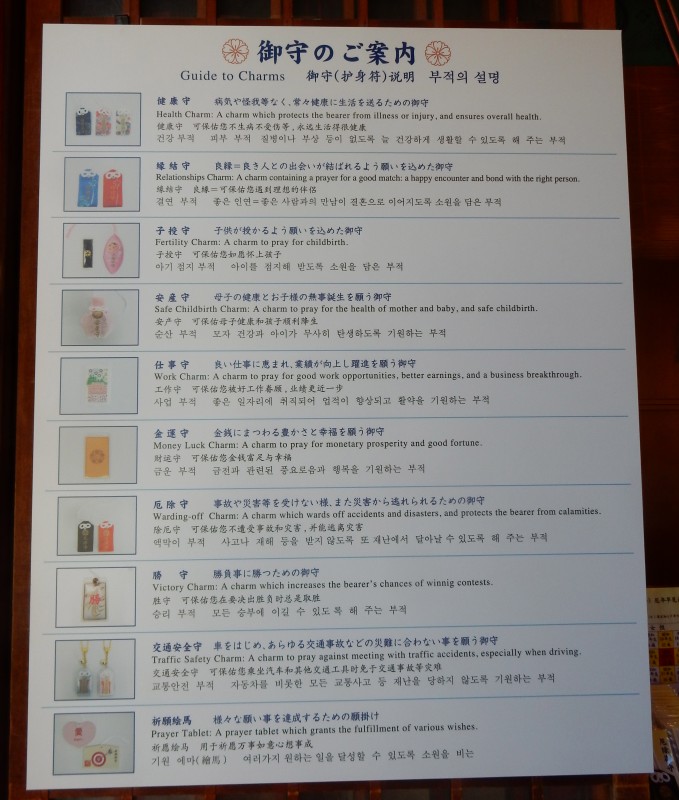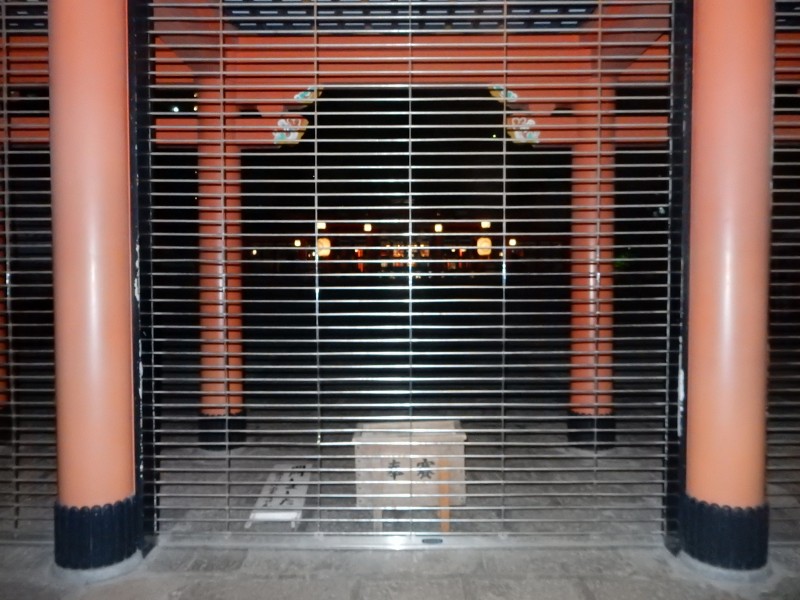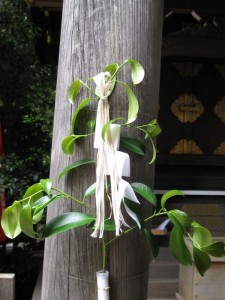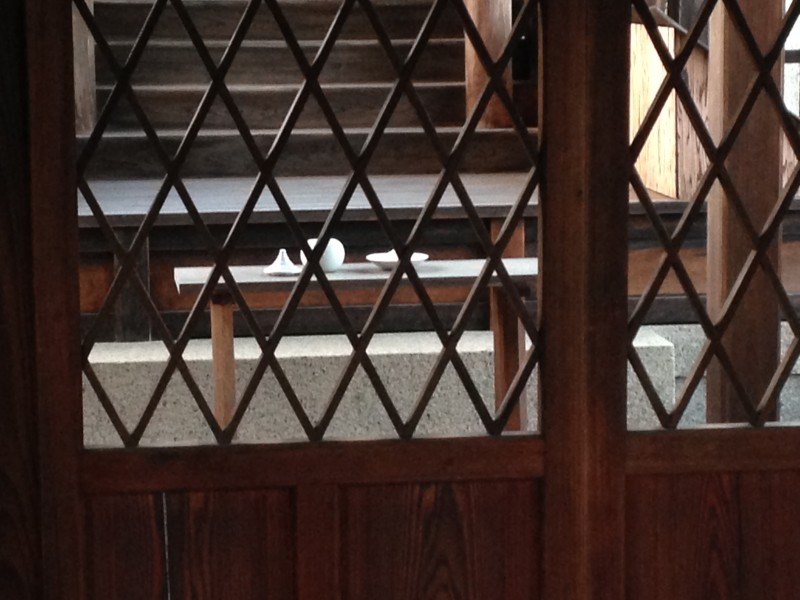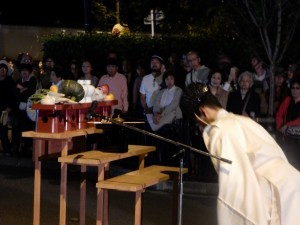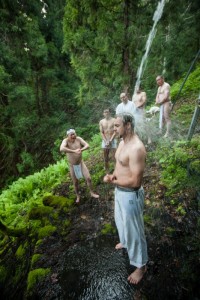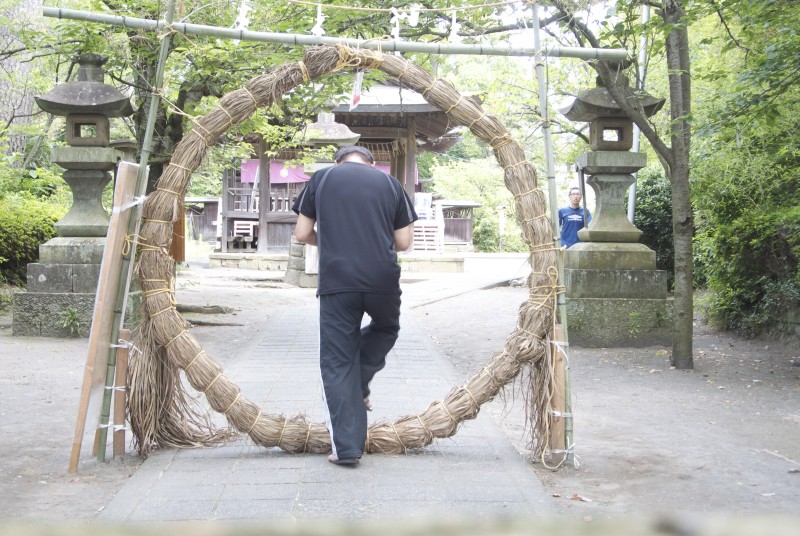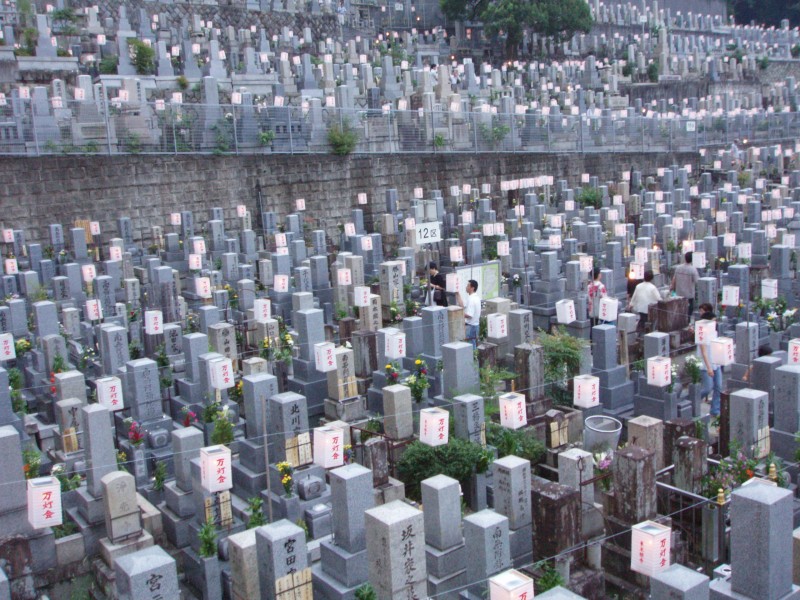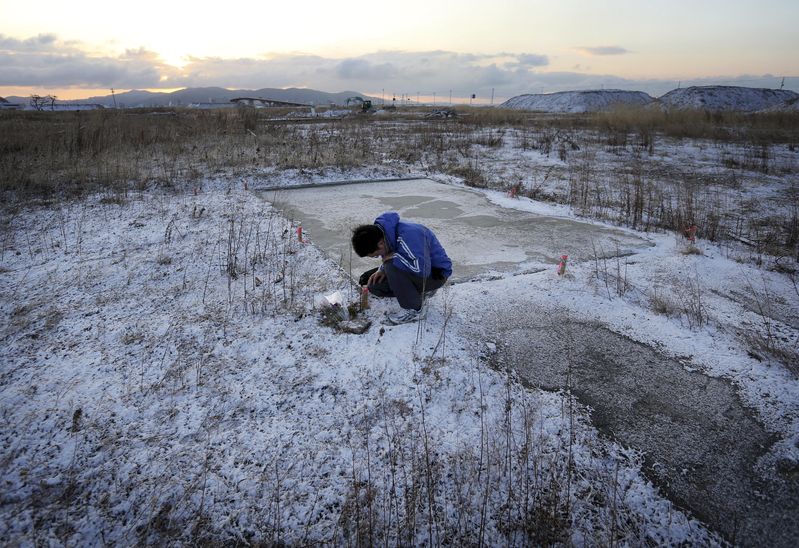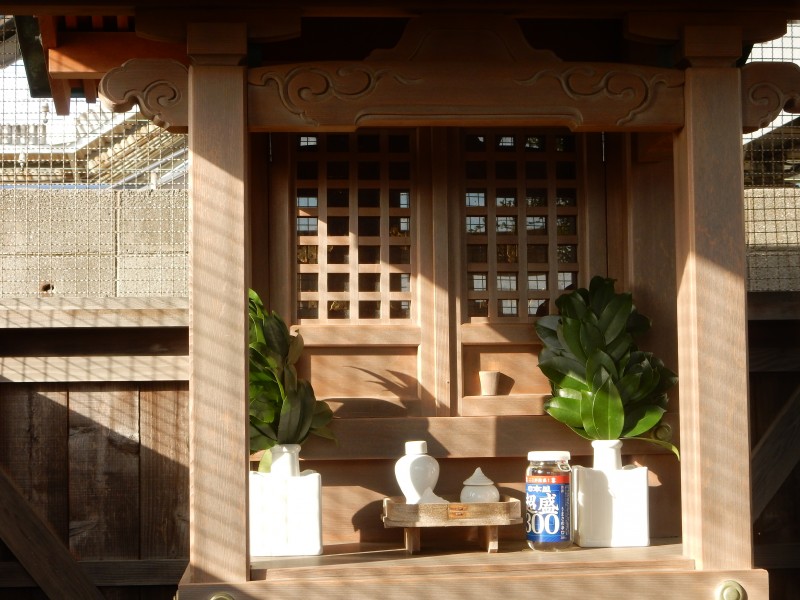
Offerings for the dead are similar to those for a kami – rice, salt and water together with some favourite food or drink
This is part of an ongoing series drawn from an academic article by Elizabeth Kenney. For a link to the original article, see Part One. The extracts below concern the time leading up to the funeral ceremony when the deceased is still in the house.
******************
Daily offerings to the deceased
Until the coffin is removed from the house, offerings are made to the deceased twice a day, in the morning and evening. The offerings may consist of the deceased’s favorite food (this type of offerings is called “usual offerings,”) or washed rice, salt and water (“fresh offerings,”). The latter are offerings usually made to the kami.
The dual offerings indicate the double, transitional nature of the deceased: he is both human and divine. Fujii Masao comments that the offering of real-people food during this stage is one thing that distinguishes a Shinto funeral from a Buddhist one, and the etiquette books advise that the Shinto dead may receive offerings of fish and meat, in contrast to the Buddhist dead, who observe vegetarian precepts.
Announcement of the “return of the spirit” to the local shrine
The announcement may be made to the local shrine or to the place where the deceased was born. The family sends a representative to the shrine to make the announcement. This rite is often omitted (or performed via telephone) nowadays, and probably seems redundant to many people, since the death has already been announced to the household kami. It is significant for our purposes, because it has no corresponding act in Buddhist funeral activities.
Purification ceremonies for the grave site
If a new grave is to be built, an “earth pacification ceremony” is called for. This is the same ceremony conducted before the construction of a new building in order to pacify the earth gods. The norito [prayer] used for the grave is appropriately different from the house-building norito and asks the kami to look after the grave that is to be built.
After the grave has been made, another purification ceremony is performed. The area to be purified is marked off with a bamboo rope. One Shinto priest waves a purification wand, and another sprinkles salted hot water over the area.
Shinto priest’s purification
In the period right after death, the deceased is cared for mostly by the family members. The first series of rites for preparing the corpse do not require a Shinto priest, but a funeral director may be present to offer guidance.
The Shinto priest has a liturgical role, does not touch the corpse, and usually does not participate until the wake. In preparation, the priest undertakes simple purificatory exercises, such as pouring cold water on himself or abstaining from meat. One priest told me that he took a bath in the morning before conducting a wake or funeral (whereas most Japanese people take their baths in the evening). These are the same sort of exercises that Shinto priests perform before most shrine ceremonies.
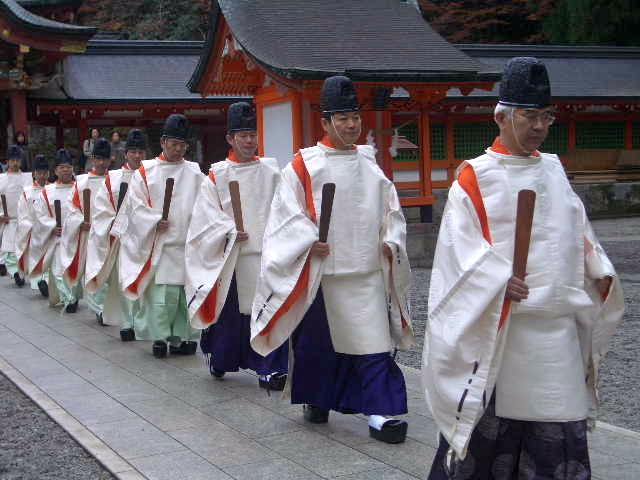
Before rituals such as this, priests have to engage in purification rites

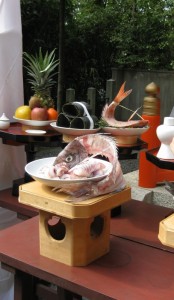
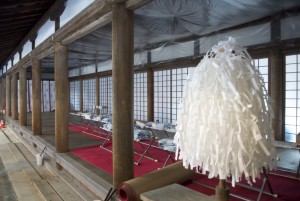
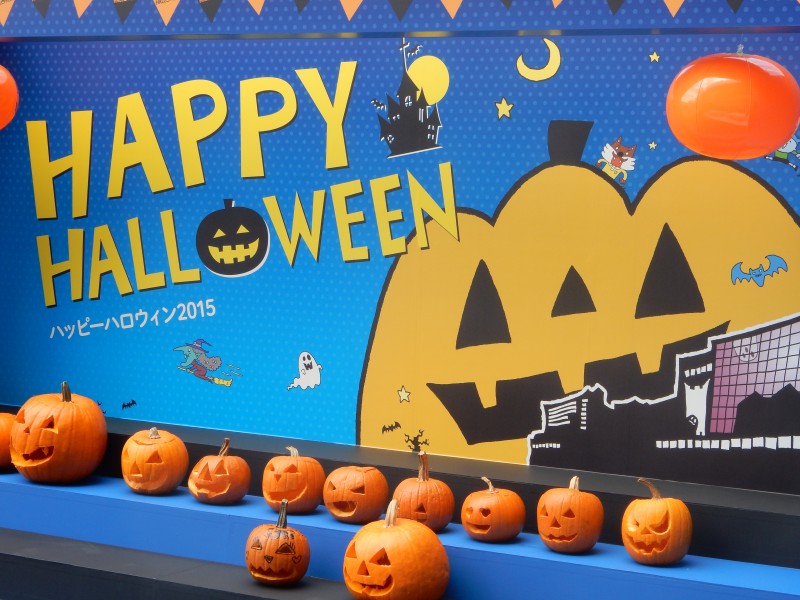
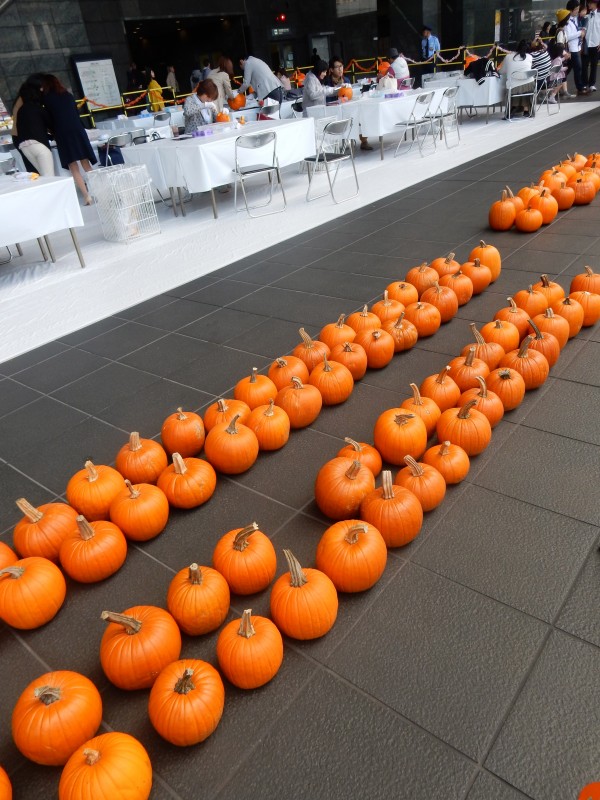
 There’s been a notable upturn in Halloween decorations this year in Japan, and I have the impression the festival is about to be celebrated with more gusto here than in the West. Green Shinto has written before of
There’s been a notable upturn in Halloween decorations this year in Japan, and I have the impression the festival is about to be celebrated with more gusto here than in the West. Green Shinto has written before of 